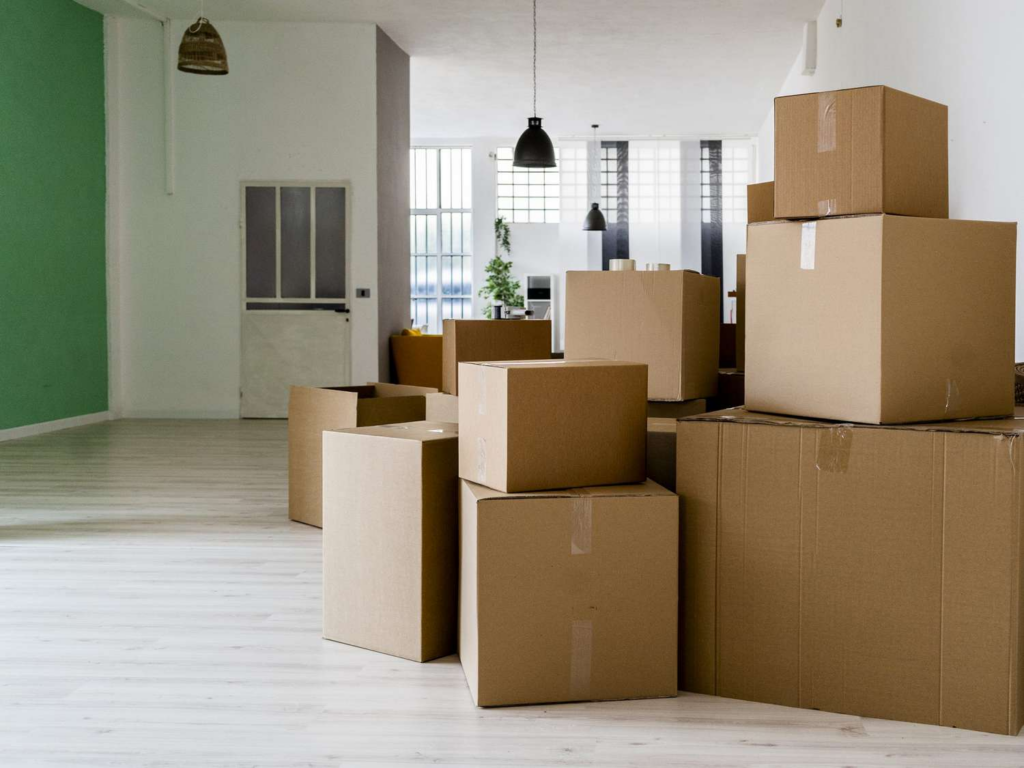Moving can be both exciting and overwhelming. The thought of starting a new chapter in life is exhilarating, but the process of packing up all your belongings can quickly become daunting. However, with proper planning and organization, packing for a move doesn’t have to be an intimidating task.
In this article, we will provide you with tips and tricks on how to pack for a move efficiently and systematically, so you can transition into your new home smoothly. From decluttering and sorting your belongings to labeling and packing them in an organized manner, we will guide you through the process of packing for perfection.
7 Tips for Decluttering and Sorting Your Belongings
Before you begin packing, it’s important to declutter and sort through your belongings. This will not only make the packing process easier but also help you get rid of items that you no longer need or want in your new home.
1. Start Early:
Packing for a move is not something that can be done overnight. It requires time and effort, especially when it comes to decluttering and sorting through your belongings. That’s why it’s important to start the process early, ideally at least a few weeks before your move date.
Starting early will give you enough time to go through each room in your home and decide what items you want to keep, donate, sell or throw away. This will help you avoid the last-minute rush and ensure that you only pack what is necessary for your new home.
2. Use the “Four-Box Method”:
When decluttering and sorting through your belongings, it can be helpful to use the “four-box method”. This involves labeling four boxes with the following categories: keep, donate, sell, and trash. As you go through each room, place items into their respective boxes based on their purpose.
This method will not only help you stay organized but also make it easier to decide what items to keep and which ones to let go. Keep in mind that the goal is to minimize your belongings, so be mindful of what you choose to keep.
3. Consider Your New Space:
Another important aspect of decluttering and sorting through your belongings is considering your new space. If you are downsizing, you may not have enough room to bring all of your current belongings with you. In this case, it’s important to be selective and only keep the items that will fit in your new space.
It can also be helpful to measure the rooms in your new home and create a floor plan before packing. This will give you a better idea of what furniture and other items will fit in which rooms, making it easier to declutter and downsize if needed.
4. Involve Your Family:
If you have a family, it’s important to involve everyone in the decluttering and sorting process. This will not only make the task more manageable but also give each family member a chance to decide what items they want to keep or let go.
Encourage your children to donate toys and clothes they no longer use, and involve your partner in deciding which furniture and household items are essential for your new home. This will not only make the process more efficient but also help everyone feel involved in the moving process.
5. Consider Your Sentimental Items:
As you declutter and sort through your belongings, it’s important to consider your sentimental items. These may include family heirlooms, photos, and other keepsakes that hold special memories.
While it can be difficult to let go of these items, keep in mind that you can always take photos or create digital copies to preserve the memories. This will help you downsize and declutter without losing the sentimental value of your belongings.
6. Donate or Sell Items:
Decluttering and sorting through your belongings is also a great opportunity to give back to the community or make some extra money. Consider donating usable items to local charities or selling them in a garage sale, online marketplace, or consignment store.
This will not only help you reduce the amount of stuff you have to pack but also make a positive impact and possibly earn some cash. However, keep in mind that selling items can be time-consuming, so it’s best to start early if you plan on doing this.
7. Dispose of Hazardous Items Properly:
When decluttering and sorting through your belongings, it’s important to dispose of hazardous materials properly. This includes cleaning supplies, batteries, paint, and other potentially harmful items.
Contact your local waste management or recycling center to find out how to dispose of these items safely. This will not only help you stay organized but also protect the environment.
Efficient Labeling and Packing Techniques
Once you have decluttered and sorted through your belongings, it’s time to start packing. To make the unpacking process easier and more efficient, it’s important to label and pack your boxes in a strategic manner.
Label Your Boxes:
Labeling your boxes is essential for staying organized during a move. Make sure to clearly mark each box with its contents and which room it belongs to. This will make it easier for you or the movers to know where each box should go in your new home.
You can also color-code your boxes by room to make the labeling process easier and more efficient. For example, all boxes with kitchen items can be labeled with a red sticker, while boxes with bedroom items can be labeled with a blue sticker.
Pack Smart:
When packing, it’s important to pack smartly to maximize space and protect your belongings. Place heavier items at the bottom of the box and lighter items on top. This will prevent boxes from becoming too heavy and reduce the risk of damage to fragile items.
Also, make sure to wrap breakable items in bubble wrap or packing paper to provide extra protection during transit. And don’t forget to fill any empty spaces in the box with packing peanuts or newspaper to prevent items from shifting and breaking.
Keep Essential Items Separate:
When packing, it’s important to keep essential items separate and easily accessible. This may include toiletries, medication, important documents, a change of clothes, and any other items you may need immediately upon arrival at your new home.
Pack these items in a clear plastic bin or a separate suitcase and label them as “essential items” so they don’t get mixed in with other boxes.
Don’t Overpack Boxes:
While it may be tempting to fit as much as possible into each box to reduce the number of boxes you need, overpacking can actually cause more harm than good. Overpacked boxes are more likely to break or rip, making it difficult to transport them without damaging the items inside.
It’s best to stick to a weight limit of 50 pounds per box and use smaller boxes for heavier items. This will make it easier for you or the movers to lift and transport the boxes without risking injury or damage.
Properly Seal Boxes:
Before loading your boxes onto the moving truck, make sure to properly seal each box with packing tape. This will prevent items from falling out and getting lost during transit.
Also, make sure to reinforce the bottom of each box with extra tape to prevent it from breaking open under the weight of its contents. And if you’re using recycled boxes, check for any weak spots or tears and reinforce them with tape as well.
Common mistake to avoid
While moving can be a stressful and overwhelming process, there are some common mistakes that you can avoid to make the experience smoother and more efficient.
Waiting Until the Last Minute:
One of the biggest mistakes people make when moving is waiting until the last minute to start packing and organizing. This not only increases stress levels but also leaves little time for decluttering and properly labeling items.
To avoid this mistake, start packing and preparing for your move at least a few weeks in advance. This will give you enough time to declutter, sort through your belongings, and pack everything properly without feeling rushed.
Not Decluttering:
Another common mistake is not decluttering before the move. Many people tend to hold onto unnecessary items, thinking they may need them in the future. However, this only adds to the number of boxes and makes unpacking more difficult.
To avoid this mistake, be honest with yourself and get rid of cardboard box any items that you no longer use or need. This will not only make packing and unpacking easier but also create a fresh start in your new home.
Not Labeling Boxes:
As mentioned earlier, labeling boxes is crucial for staying organized during a move. However, many people tend to skip this step and end up with a jumbled mess of unlabeled boxes in their new home.
To avoid this mistake, take the time to clearly label each box with its contents and which room it belongs to. This will save you time and frustration when unpacking in your new home.
Using Incorrect Packing Materials:
Using incorrect packing materials can also lead to damaged items during a move. Many people try to cut costs by using old newspapers or towels instead of proper packing materials, but this can result in broken or scratched belongings.
To avoid this mistake, invest in quality packing materials such as bubble wrap, packing paper, and sturdy boxes. This will provide proper protection for your items during transit.
Not Hiring Professional Movers:
Finally, not hiring professional movers can also be a common mistake that can lead to a more stressful and inefficient move. While it may seem like an added expense, professional movers have the experience and resources to make your move smoother and safer.
To avoid this mistake, consider hiring professional movers to handle the heavy lifting and transportation of your belongings. This will free up your time and energy to focus on other aspects of the move.
FAQs
How can I effectively pack for perfection and organize my belongings for a move using high-quality packing materials?
Achieving a successful move starts with packing for perfection. Discover the importance of using high-quality packing materials to ensure the safety of your items during transit. Learn tips on packing room by room, utilizing all the boxes efficiently, and making the daunting task of packing more manageable. Find out how to assign corresponding rooms to each box, involving family members for a seamless and well-organized moving experience.
What role do high-quality packing materials play in ensuring a smooth and successful move when packing room by room?
The key to a successful move lies in the details, and utilizing high-quality packing materials is paramount. Understand how to pack room by room efficiently, ensuring that all the boxes are filled and secured properly. Discover why investing in high-quality packing materials is essential for the protection of your belongings, making the daunting task of packing more manageable. Engage family members in the process and assign corresponding room to each box for an organized and stress-free move.
How can involving family members in the packing process contribute to a successful move and the efficient use of high-quality packing materials?
Packing for perfection involves a collaborative effort. Learn how involving family members in the packing process can contribute to a successful move. Understand the importance of assigning corresponding rooms to each box and using high-quality packing materials for added protection plastic bags. Discover practical tips on making the daunting task of packing more manageable, ensuring that all the boxes are packed efficiently for a smooth and organized relocation.
Conclusion:
Moving can be a daunting and overwhelming process, but with proper planning and organization, it can also be a smooth and stress-free experience. By following these tips, you can ensure that your belongings are packed safely and efficiently, making the transition to your new home much easier. Remember to label your boxes, pack smartly, keep essential items separate, avoid overpacking boxes, and properly seal your boxes to avoid any common mistakes.
And if possible, consider hiring professional movers to make the process even smoother. Happy moving! So, with these tips in mind, you can now begin packing for your move with confidence and ease.






